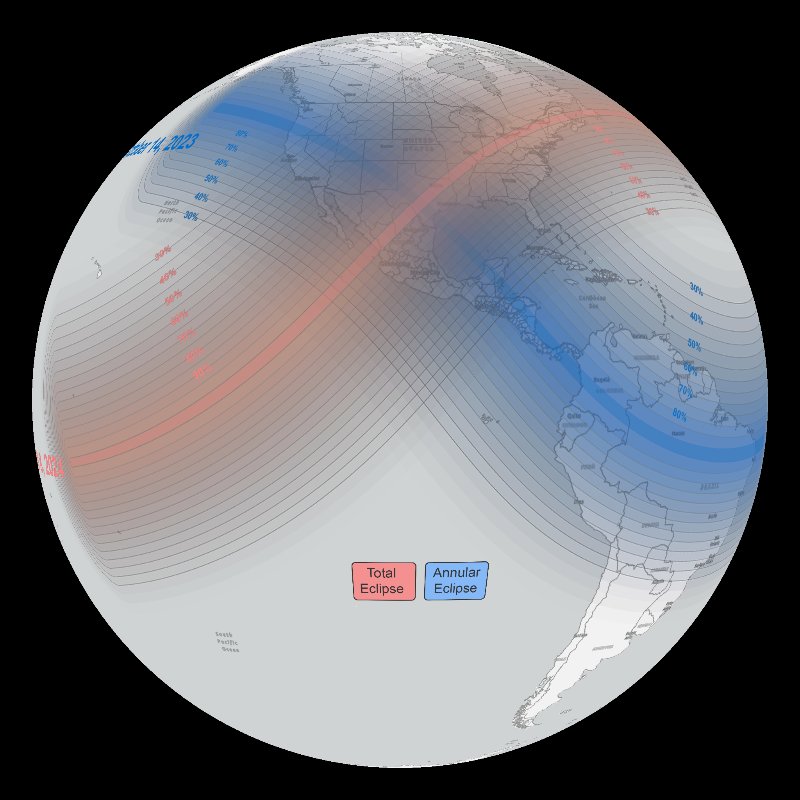Celestial Dance: The 2023 & 2024 Solar Eclipses

Details
Permalink to Details- Added to the Catalog
- Available for
- SOS
- Explorer
- Categories
- People: Live Programs
- Space: Live Programs
Description
Permalink to DescriptionIn the summer of 2017, a total solar eclipse inspired many Americans with awe, as the Moon passed in front of the Sun briefly turning day to night. The experience was extraordinary for those who were lucky enough to see it. And now, six years later, we look forward to two solar eclipses across America within nearly six months of each other.
In honor of these momentous occasions, we have created new datasets that will inspire your audiences to go and see the alignment of the Sun, the Moon, and Earth near them.
Don’t miss the art, citizen science, and classroom activities that have been curated and created as part of this program. They include a poem, hoping to inspire visual art making in the museum or the classroom, as well as two different citizen science data collection apps and classroom lesson plans. In addition, we have created a FAQ page to help you answer all the fun and quirky questions that will come as part of this astronomical event.
Datasets included
Permalink to Datasets included- Solar Eclipses: What Are They?
- Solar Eclipse Paths - 2010-2030
- Solar Eclipse Paths - 2023 & 2024
- Solar Eclipse Paths and Cloud Fraction: April
- Solar Eclipse Simulation (NASA) - April 8, 2024
- Solar Eclipses and Space Weather Explained
Script
Indigenous Perspectives
Permalink to Indigenous PerspectivesCheck out the Exploratorium's page on Navajo Knowledge of the Cosmos. In Navajo tradition, eclipses mark a sacred time.
Poetry and Art
Permalink to Poetry and Art- Read to students the poem entitled, "Total Eclipse of the Sun."
- Alternatively, print the hand-out for students to read in English or Spanish.
- Have the students draw, paint, or digitally create a picture of a scene that is described in the poem.
- Send a photo of your art or photos of your students’ art to: hilary.peddicord@noaa.gov or upload to social media and tag @scienceonasphere. The most common hashtags for the eclipse are #eclipse2024 #eclipse2023
- We hope to use your art in a movie we are making!
Citizen Science Opportunities and Lessons
Permalink to Citizen Science Opportunities and LessonsGLOBE Observer
Permalink to GLOBE ObserverThrough GLOBE Observer, the app of The GLOBE Program, you can monitor changes in temperature and clouds throughout the eclipse. Learn more at GLOBE Observer Eclipse. See how we plan to use it by clicking here.
CrowdMag
Permalink to CrowdMagCIRES Education & Outreach GeoMag page and explore Earth's geomagnetism using NOAA's CrowdMag app and classroom lessons on Geomagnetism and Earth's Magnetic Field.